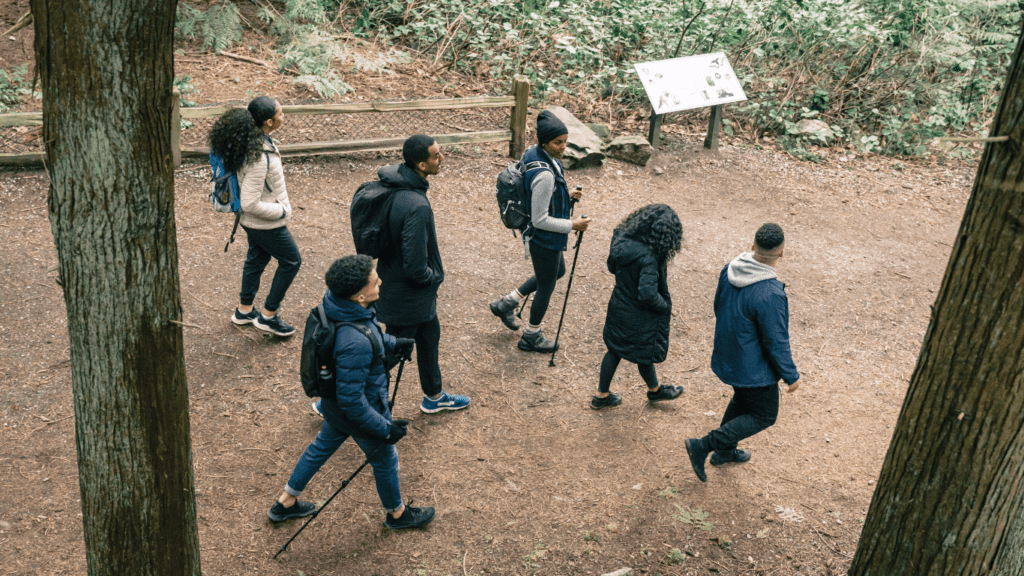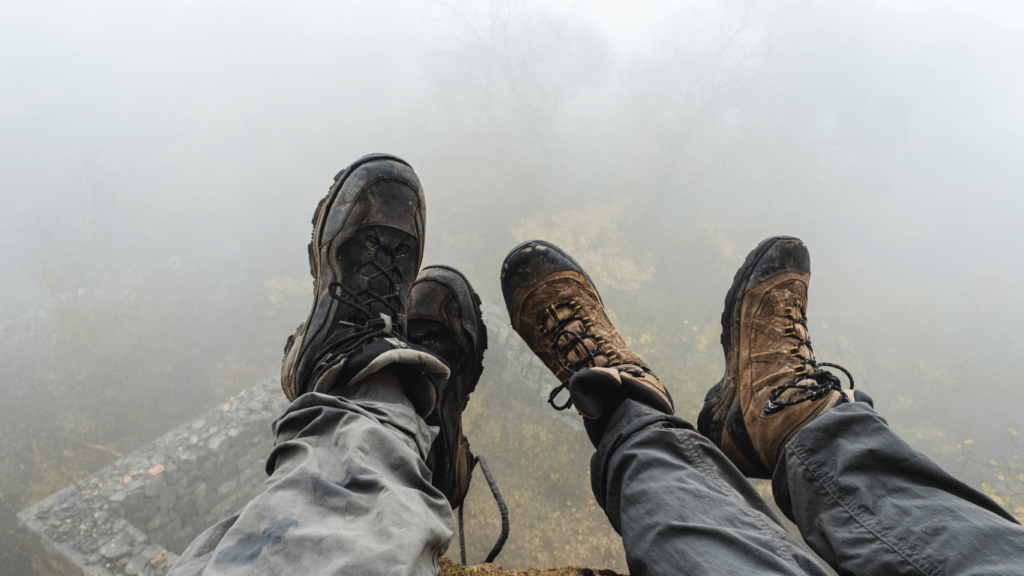Understanding Your Hiking Needs
I assess my hiking needs by considering several factors, which help determine the right gear. The type of hike, weather conditions, and duration are key aspects.
Type of Hike
Identify the terrain you’ll encounter. For mountainous trails, I prioritize sturdy boots with excellent ankle support. Flat, well-maintained paths require less aggressive footwear. Evaluate the difficulty. A day hike demands different gear than a multi-day trek.
Weather Conditions
Weather significantly influences gear choices. In hot climates, I opt for moisture-wicking clothing and a wide-brimmed hat. Cold weather hiking needs insulated layers and a robust waterproof jacket. Always check forecasts to pack effectively.
Duration of Hike
The hike’s length dictates what I bring. For day hikes, I carry lightweight essentials. Multi-day hikes require additional items like a sleeping bag and cooking supplies. Pack efficiently to manage weight without compromising necessities.
Personal Comfort and Safety
Safety and comfort are paramount. I choose gear that fits well and meets my comfort preferences. Pay attention to fit and adjustability in items like backpacks and boots. Safety gear like:
- first aid kit
- map
- compass
are non-negotiable.
Hydration and Nutrition
Staying hydrated and nourished is crucial. For short hikes, I use a hydration pack or water bottle. Longer hikes demand a water filtration system. My food choices depend on hike duration; I carry energy bars for short trips and meal kits for extended ones.
Technical Needs
Understanding tech needs aids in making informed decisions. For navigation, I pack a GPS device or map. In remote areas, I consider a satellite communicator for emergencies. These tools enhance safety and guide my journey efficiently.
Clothing Essentials
Proper clothing is crucial for a successful hike, offering both comfort and protection against the elements. From base layers to outerwear, each layer serves a specific function.
Base Layers
Base layers manage moisture and regulate body temperature during hikes. Choose materials like merino wool or synthetic fabrics such as polyester. These fabrics wick sweat away from the skin, keeping you dry and reducing the risk of chafing. Avoid cotton, as it retains moisture and can lead to discomfort in various weather conditions. In summer, opt for lightweight, short-sleeve options; for colder climates, consider long-sleeve thermal tops.
Insulating Layers
Insulating layers provide warmth by retaining body heat. Fleece jackets and down vests are excellent choices. Fleece offers breathability and quick-drying properties, while down provides superior warmth-to-weight ratio. When dealing with wet conditions, synthetic insulations like PrimaLoft maintain warmth even when damp. Choose layers that are easy to add or remove based on changing weather and activity levels.
Weather-Resistant Outer Layers
Weather-resistant outer layers shield against wind, rain, and snow. Select waterproof and breathable jackets made from materials like Gore-Tex or eVent. These fabrics block external moisture while allowing internal moisture to escape, keeping you dry and comfortable. Ensure the jacket has adjustable cuffs, a hood, and ventilation options for enhanced protection and versatility. For bottoms, consider waterproof pants to keep legs dry during wet hikes.
Properly layering ensures comfort and safety, allowing you to adapt to various weather conditions and maximize your hiking experience.
Footwear Selection

Choosing the right footwear is crucial for a successful hike. Proper shoe selection enhances comfort and prevents injuries.
Hiking Boots vs. Trail Shoes
Hiking boots and trail shoes suit different purposes. Boots offer more ankle support and protection, ideal for rough terrains and heavier loads. Their sturdy build helps prevent ankle injuries on uneven ground. However, they can be heavier and less breathable.
Trail shoes, on the other hand, are lightweight and provide good traction. They’re best for well-maintained trails and shorter hikes. While they lack the ankle support of boots, their flexibility and lightweight design make them comfortable for faster-paced hikes.
Importance of Proper Fit
- Proper fit is vital in hiking footwear.
- Shoes that fit well prevent blisters and discomfort.
- When trying on hiking footwear, one must wear hiking socks to ensure accuracy.
- It’s essential to have enough toe room to avoid pressure on descents and a secure heel to prevent slipping.
- Size adjustments should take into account foot swelling during long hikes.
Backpacks and Storage
Selecting the right backpack is vital for keeping gear organized and accessible during a hike. It’s essential to balance capacity, comfort, and functionality for a successful outdoor adventure.
Choosing the Right Size
Finding the right backpack size depends on the hike’s duration and the amount of gear needed. Daypacks, typically ranging from 20 to 35 liters, suit short hikes and minimal gear. Overnight packs, between 35 to 50 liters, accommodate extra clothing and food for longer trips. Multi-day backpacks, usually 50 to 70 liters, are ideal for extended treks with camping equipment. For example, a weekend trip might require a 45-liter pack to store a tent, sleeping bag, and cooking gear.
Organizational Features
Useful organizational features can enhance convenience and accessibility on the trail. A backpack with multiple compartments helps separate items, such as a sleeping bag, stove, or clothing and reduces the time spent searching for them. External pockets offer quick access to essentials like maps or snacks. Load-adjustable straps aid in distributing weight evenly, making the pack more comfortable to carry. Moreover, hydration reservoir compatibility allows for easy access to water, ensuring proper hydration without needing to stop frequently.
Navigation Tools
Having the right navigation tools is essential to ensure you stay on track during your hike. Here’s how to choose the best tools for accurate and reliable navigation.
Maps and Compasses
Maps and compasses are foundational navigation tools. Paper maps don’t rely on batteries, making them trustworthy in remote areas. I always carry a topographic map specific to my hiking area. Compasses complement maps by providing orientation. When orienting the map, aligning it with the compass ensures accurate direction. Investing in a quality compass with a clear base plate and adjustable declination is recommended. Knowledge of how to read contour lines on maps and the basics of navigation using a compass can be life-saving.
GPS Devices
For more advanced navigation, GPS devices offer precise positioning. Modern devices provide real-time tracking, preloaded maps, and the ability to mark waypoints. My preferred GPS device is one equipped with a high-sensitivity receiver, long battery life, and rugged design. Compatibility with other gadgets, like smartphones, enhances functionality. Some devices also have SOS features for emergencies. Keep in mind, while GPS is powerful, it’s dependent on satellite signals and batteries. Therefore, I always carry it as a complement to, not a replacement for, my map and compass.
By combining traditional and modern navigation tools, hikers can confidently navigate and enjoy their adventures safely.
Cooking and Hydration Gear
Having the right cooking and hydration gear is essential for a successful hiking adventure. Your ability to prepare meals and ensure safe drinking water can make or break your hiking experience.
Portable Stoves
Portable stoves are vital for cooking meals on the trail. Choose a stove based on fuel type, weight, and cooking speed. For instance, canister stoves use pre-pressurized gas canisters and are lightweight and quick to set up. Liquid fuel stoves, which run on white gas, are more versatile in cold conditions but are heavier. Check your hiking trail’s regulations about fuel use to finalize your decision. A windscreen also enhances stove efficiency by protecting the flame from winds. Don’t forget to bring a lightweight pot or pan. Titanium pots are durable and light, while aluminum ones offer better heat distribution.
Water Filtration Systems
Safe drinking water is crucial on any hike. Water filtration systems remove harmful bacteria and protozoa from natural water sources, ensuring you stay hydrated without risks. Portable water filters, such as pump filters or gravity filters, are effective and user-friendly. UV light purifiers offer a chemical-free option, using ultraviolet light to kill microorganisms. Consider the water availability on your trail, carrying a lightweight water bottle or hydration reservoir for convenience. For longer hikes, pack purification tablets as a backup. Always filter water from clear streams or lakes to maximize purification efficiency.
Safety and Survival Equipment
Safety and survival equipment are crucial for any hiking adventure, ensuring preparedness for unexpected situations.
First Aid Kits
First aid kits are essential for addressing injuries on the trail. A well-stocked kit should include adhesive bandages, antiseptic wipes, gauze pads, medical tape, tweezers, and pain relievers. Adding blister treatments, like moleskin or blister pads, is vital due to the high likelihood of foot issues during hikes. Compact first aid kits designed for hiking are available, and it’s important to regularly check and restock them before each trip.
Emergency Shelters
Emergency shelters protect against harsh weather or unexpected overnight stays. Options include lightweight emergency bivy sacks, space blankets, and tarp shelters. Bivy sacks offer full-body coverage and are often waterproof. Space blankets offer thermal insulation and reflect body heat. Tarp shelters, made from durable materials, can be set up quickly using trekking poles and rope. These options ensure hikers have a reliable form of shelter in emergencies, enhancing overall safety.



 Hiking Trail Guide Expert & Outdoor Adventure Curator
Keturaha Perrymaners is an experienced trail guide and hiking enthusiast with an unparalleled passion for discovering and exploring nature’s most beautiful and secluded paths. As the hiking trail expert at Whisper Forest Ways, Keturaha curates comprehensive guides that cover everything from beginner-friendly walks to challenging multi-day treks. Her deep knowledge of terrain, weather patterns, and outdoor safety ensures that her recommendations cater to hikers of all levels, helping them prepare for their adventures with confidence. Whether you’re seeking scenic trails for mindfulness walks or rugged paths for a physical challenge, Keturaha’s expertly crafted guides provide the insights and inspiration you need to venture into the wilderness and fully immerse yourself in nature’s beauty.
Hiking Trail Guide Expert & Outdoor Adventure Curator
Keturaha Perrymaners is an experienced trail guide and hiking enthusiast with an unparalleled passion for discovering and exploring nature’s most beautiful and secluded paths. As the hiking trail expert at Whisper Forest Ways, Keturaha curates comprehensive guides that cover everything from beginner-friendly walks to challenging multi-day treks. Her deep knowledge of terrain, weather patterns, and outdoor safety ensures that her recommendations cater to hikers of all levels, helping them prepare for their adventures with confidence. Whether you’re seeking scenic trails for mindfulness walks or rugged paths for a physical challenge, Keturaha’s expertly crafted guides provide the insights and inspiration you need to venture into the wilderness and fully immerse yourself in nature’s beauty.
